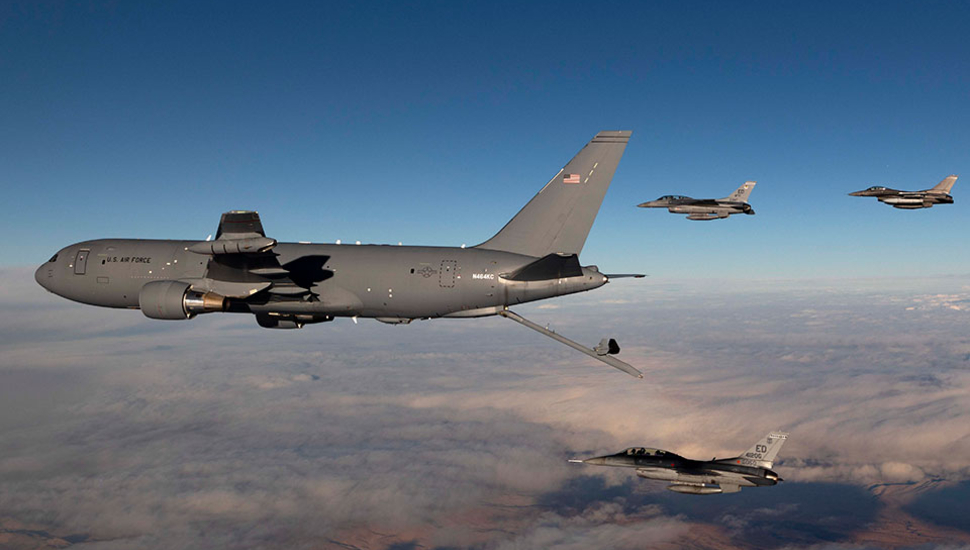Boeing has made insufficient progress fixing issues with the KC-46A aerial refuelling tanker’s remote vision system (RVS) – the camera-based technology that helps crew guide a refuelling boom to receiving aircraft, according to the US Air Force.
The service has labelled the problem a category one deficiency, defined as an issue that “may cause death or severe injury… or major damage to a weapon system”, the service says.
Category one deficiencies can also restrict combat readiness or lead to a production line stoppage.
“When we accepted the KC-46 with known [category one] deficiencies, we did so with the belief that it offered the fastest route to achieve limited operational capability and meet an urgent warfighter requirement,” says General Maryanne Miller, commander of the USAF Air Mobility Command. “Eight months have passed since our first delivery and Boeing has not made the progress needed in addressing this [category one] deficiency.”
“This is a pass [or] fail requirement,” she adds.

Boeing has delivered 19 KC-46A refuelling tankers
USAF
Boeing was under contract to deliver 18 combat-ready KC-46A tankers to the USAF in August 2017, but did not deliver the first aircraft until January 2019.
Since then, the tanker programme has been beset by foreign object debris (FOD) issues, with tools, rubbish and parts like loose nuts being left inside airframes.
FOD issues have slowed deliveries. The company has delivered 19 tankers and the last aircraft was received free of FOD, says the USAF.
Boeing says it believes it can deliver 17 more tankers before the end of the year, meeting its goal of 36 in 2019.
However, Miller says deliveries are now progressing at three monthly, meaning Boeing must significantly pick up the pace to meet its goal.
Boeing is also dealing with another category one deficiency, discovered this month, which involves cargo floor restraints unlocking during a recent mission.
Boeing is hoping to have a solution to the issue in the “near term,” but has not presented the USAF with any permanent fixes.
With the KC-46A entering Initial Operational Test and Evaluation in the fall and the USAF aiming to have the aircraft enter service by 2022 or 2023, the service is worried about the impact further delays might have on the USA’s refuelling abilities, says Miller.
Miller says Boeing and the USAF already agree to scientific parameters that must be met for a new RVS to be accepted.
Boeing has made progress addressing seven of nine standards, but must still address the camera’s resolution, which provides boom operators with degraded 20/50 vision, and depth perception.
“Air refuelling is inherently dangerous,” says Miller. “Not knowing where the end of that receptacle is – this an issue.”
The RVS has also had issues related to sun glare causing a monitor to washout.
Issues aside, Miller calls the KC-46A “a great airplane” and says the USAF remains committed to the aircraft.
The service is not considering replacing the KC-46A with its chief competitor, the Airbus A330 Multi Role Tanker Transport, she adds.
In 2018, the United States Transportation Command said it had 20,000-30,000h annually unsupported by aerial refueling. To fill its requirements, the military was considering leasing services from commercial companies.
That unsupported need is not related to KC-46A delays and would be in addition to the Boeing programme, says Miller.
Ultimately, fixing KC-46A issues, not procuring new aircraft, remains the USAF’s top priority, she says.
“I’m really looking forward to [Boeing] bringing me the solution in a couple of months,” says Miller. “And then, it’s a pass [or] fail grade on that one. And, my hope is they will meet all the parameters.”
Source: FlightGlobal.com


























